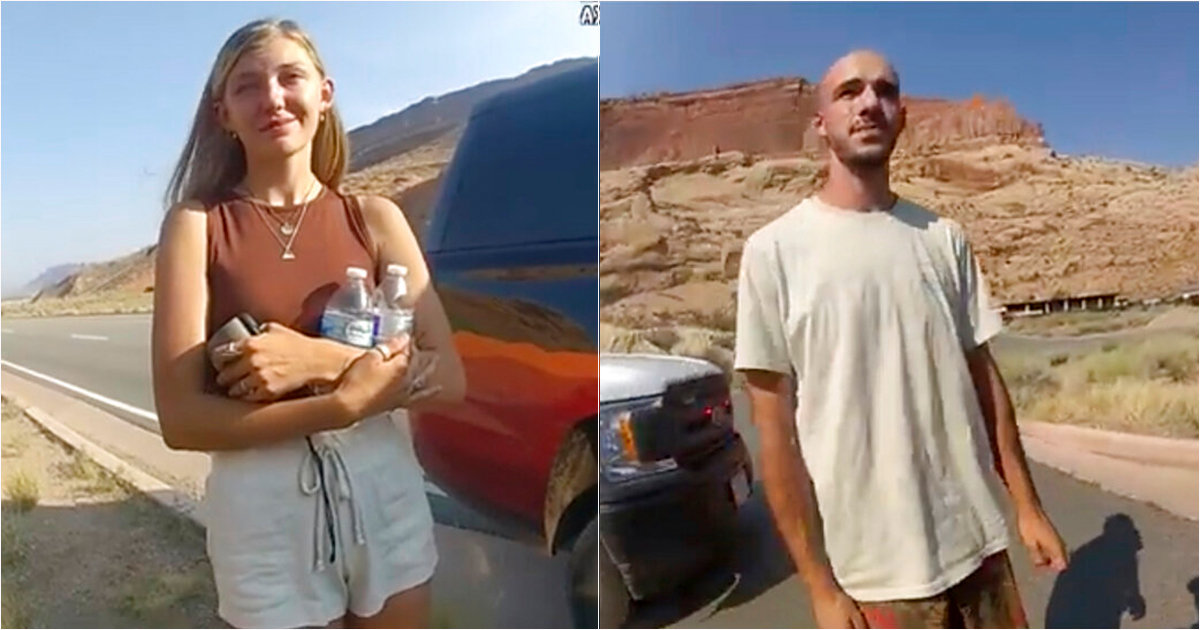
By Melissa Morales
On July 2, 2021, Gabrielle “Gabby” Petito and her fiancé Brian Laundrie left New York on a cross-country camping trip. The trip was supposed to last four months, but only two months later on Sept. 1, Brian returned to his parents’ home in Florida without Gabrielle. Ten days later on Sept. 11, Gabrielle was considered a missing person.
Brian, who is a person of interest in the 22-year-old woman’s disappearance, refused to cooperate with the authorities as they started to ask questions and search for his partner. He then vanished when the investigation began to attract widespread attention on social media. Two days after investigators discovered remains in Wyoming, a coroner confirmed that the body was in fact Gabrielle Petito’s. The cause of death? Homicide.
Gabrielle was only beginning to live her life. She was a travel blogger and influencer, documenting her trips on Instagram, YouTube, and TikTok. Her case became viral and sparked widespread attention across many news outlets and social media platforms. With this, many aspects of missing person cases came to light, such as the influence of social media and an active online trail, the need for domestic violence awareness, and #VanLife’s dark side.
More recently, however, the Gabrielle Petito case has prompted the path for important conversations on news coverage, racial disparities, and social media attention. This is not meant to take away from the tragedy of Petito’s death. Rather, this case is drawing light on the way certain reports receive prolonged attention while others are quickly forgotten, or altogether unheard of. With the Gabby Petito case, however, I think that these tendencies are slowly shifting.
The spotlight on Petito’s disappearance led advocates and families of missing people to speak out on why other cases involving people of color have not received the same amount of news coverage and social media attraction. This is sometimes referred to as the “missing white woman syndrome,” a term coined by American news anchor Gwen Ifill. Young, typically middle to upper class, white women and men receive more publicity and media attention when they go missing. Whereas, missing people of color do not, according to Ifill’s concept.
MSNBC host Joy Reid even criticized the news industry and called the Petito coverage an example of the “missing white woman syndrome.” Her words sparked media backlash online, leading to some controversy.
Similarly, news anchor Frank Somerville was pulled off the air and suspended from KTVU following his commentary on the racial disparity in media coverage of missing person cases to the Gabby Petito homicide case. “But the way this story captivated the nation has many wondering why not the same media attention when people of color go missing,” the local Oakland news reporter said. Somerville had been trying to raise awareness by providing statistics and more context to the story since Petito’s disappearance, but his take was continually rejected by others in the newsroom.
The thing is, however, statistics do reveal the racial disparities and therefore, the lesser media coverage and social media attention when people of color go missing. According to an article from Poynter, “Petito vanished in Wyoming, where over 700 indigenous people, primarily girls, have disappeared over the last decade. None has generated the same social media attention or news coverage.”
Another report from Wyoming’s Taskforce on Missing and Murdered Indigenous Persons provides more information: 710 Native American people were missing in the state between 2011 and 2020, revealing the racial disparities in media coverage of missing persons between indigenous people and white people. “White people were more likely to have an article written while they were still missing… Indigenous people were more likely to have an article written about them being missing only after they were found dead,” the site stated.
It is extremely important to get more inclusive coverage with the same energy, attention, and interest for every missing person, regardless of age, gender, race, or socioeconomic status. The Gabby Petito case is shedding light on the importance of inclusivity in media coverage with better hopes for the future. It is leading to more uncomfortable yet important conversations being held about reported disappearances, which can lead to shifts on how these cases are covered globally.
From the Gabby Petito case, some progress is already being made as the media follows two missing person cases in particular. Lauren “El” Cho reportedly went missing on June 28. She was living on a converted bus in Morongo Valley with her friend and former partner. Recently, a team of investigators joined the search for Lauren and a dedicated Facebook group has been posting updates on the investigation.
Another case involves Daniel Robinson, a field geologist who was last seen leaving his job site near Sun Valley Parkway and Cactus Road in Buckeye, Arizona on June 23. Daniel’s family hired a private investigator to look into his disappearance and launched a GoFundMe to help the search.
As Petito’s family awaits further news on the ongoing case, many people across the country, including myself, hope the wide media interest and attention from this case can continue its course. So other missing persons, like Daniel and Lauren, can get the same attention.
